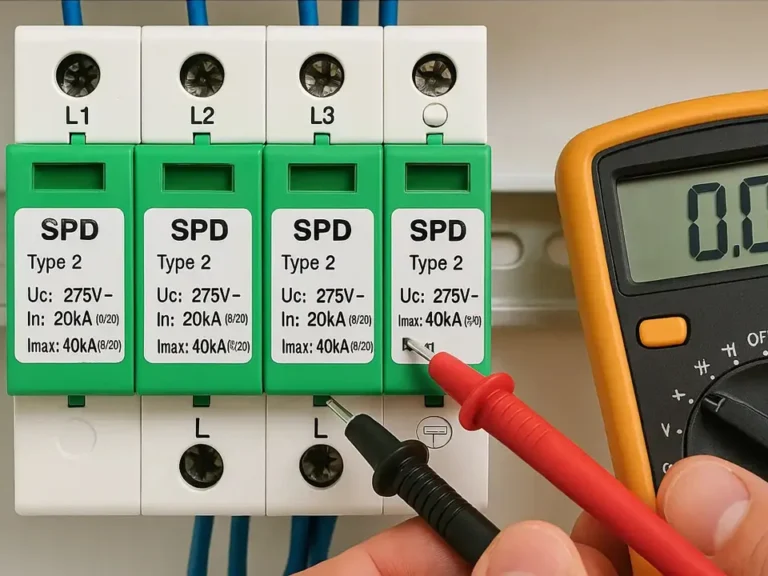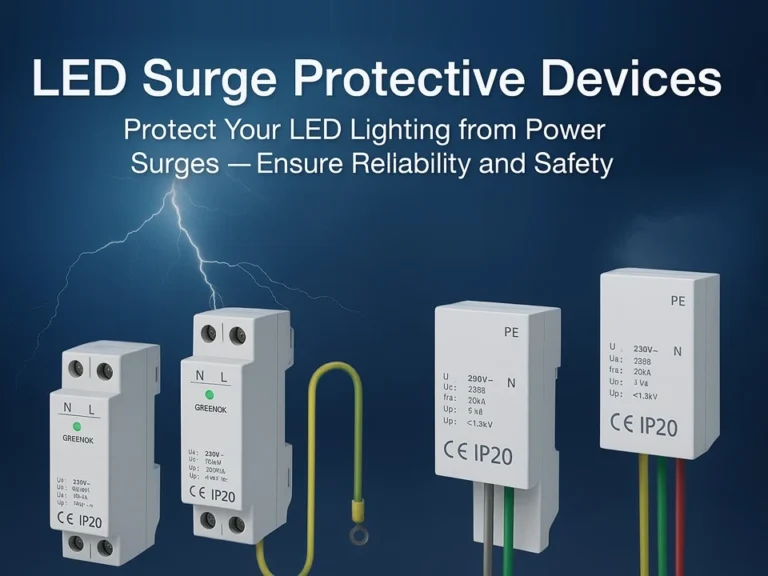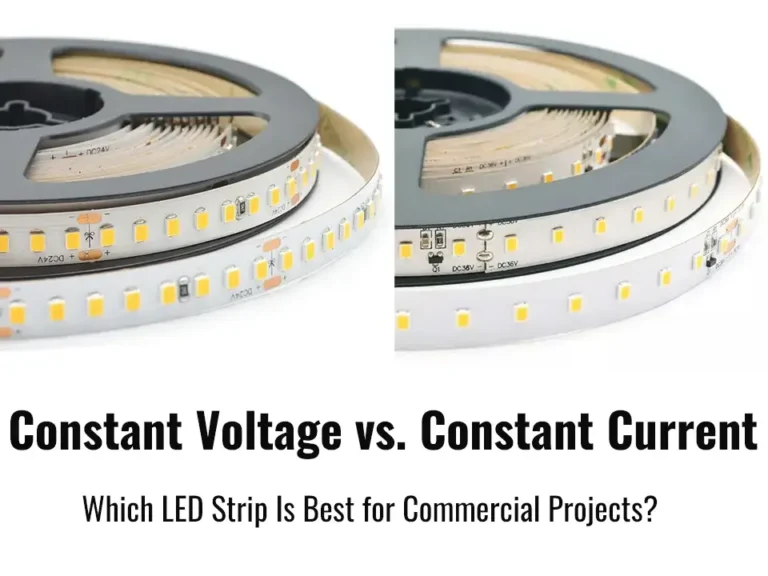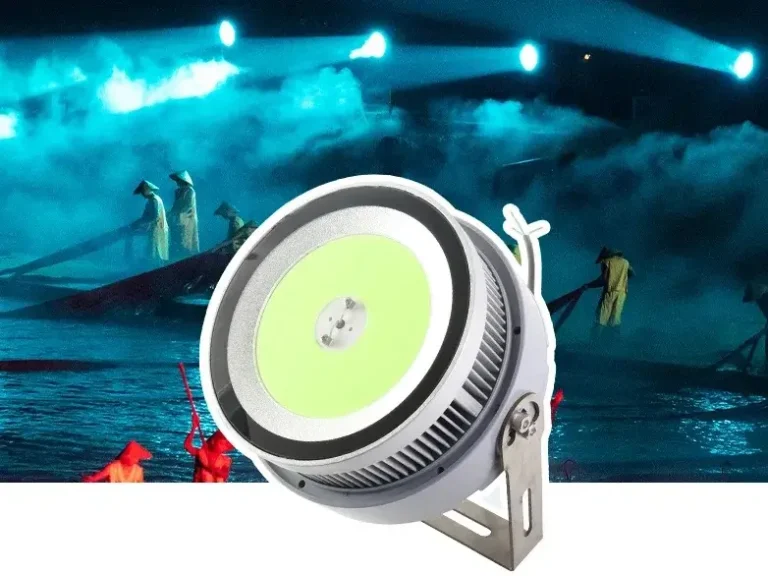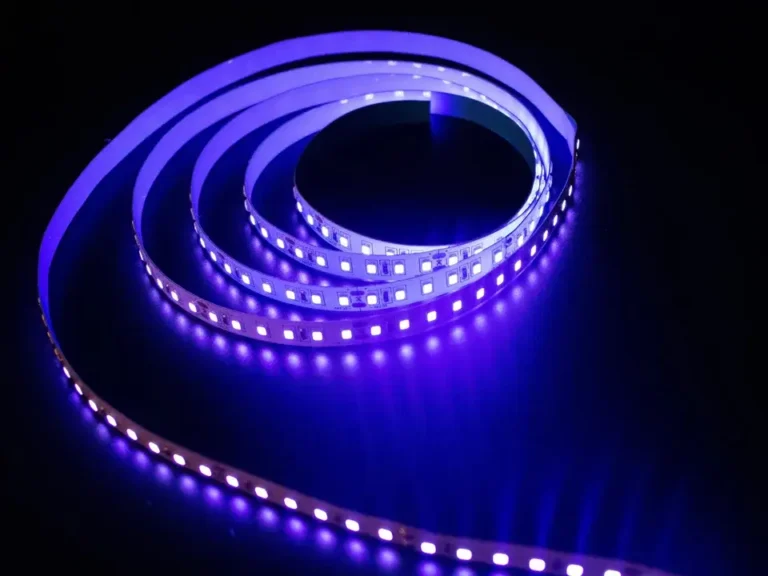No mundo altamente eletrificado e digitalizado de hoje, nossa sociedade conta com dispositivos eletrônicos frágeis - de Smart TVs e computadores em residências a unidades de controle de precisão em ambientes industriais.
No entanto, uma ameaça invisível se esconde dentro da rede elétrica: surtos elétricos. Eles podem causar danos massivos em um milhão de segundos. Dispositivos de proteção contra sur (SPDs) servem como defesa crítica contra essa ameaça. Mas nem todos os SPDs são criados iguais.
Compreender as distinções entre SPDs Tipo 1, Tipo 2 e Tipo 3 é essencial para a construção de um sistema de proteção contra surtos abrangente e eficaz. Este artigo analisa as funções, padrões e aplicações dessas três categorias de SPD, fornecendo um guia completo para construir uma defesa eletrônica robusta.
O que é um dispositivo de proteção contra surtos (SPD)?
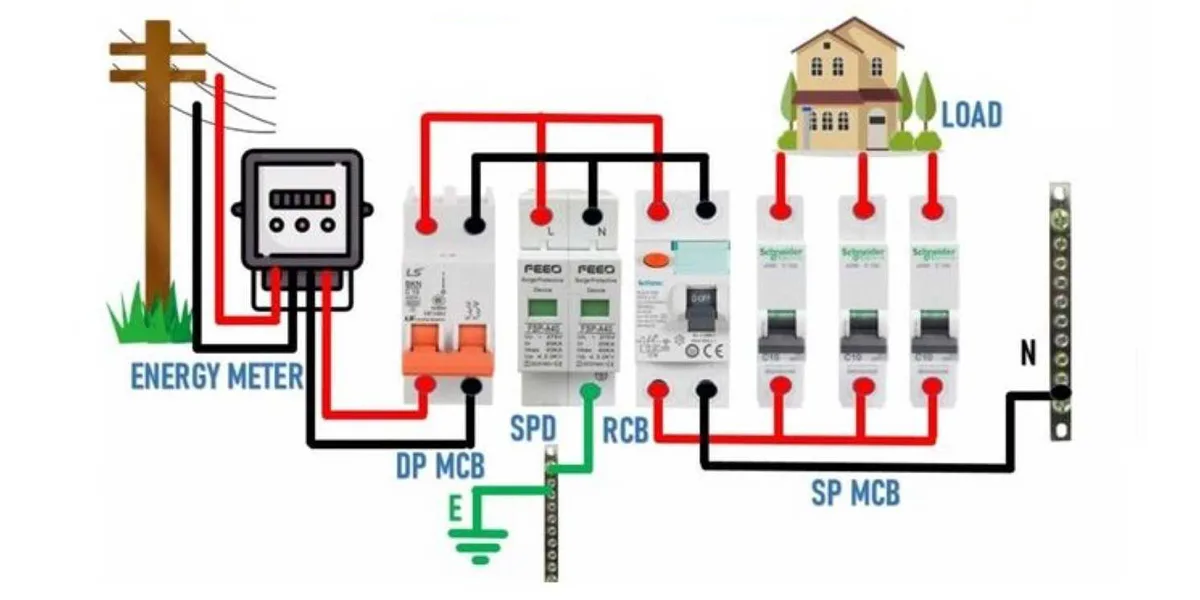
De onde vêm os surtos?
Um surto, também conhecido como sobretensão transitória, refere-se a um pulso de corrente elétrica com duração astronômica (microssegundos a milissegundos), mas uma amplitude de tensão que excede os níveis operacionais normais. Pode ser amplamente categorizado em dois tipos: surtos externos e surtos internos.
Surtos externos (ameaça primária)
a) relâmpagos diretos: Relâmpagos de energia que atingem o raio ou estruturas próximas injetam milhões de volts - o cenário mais extremo.
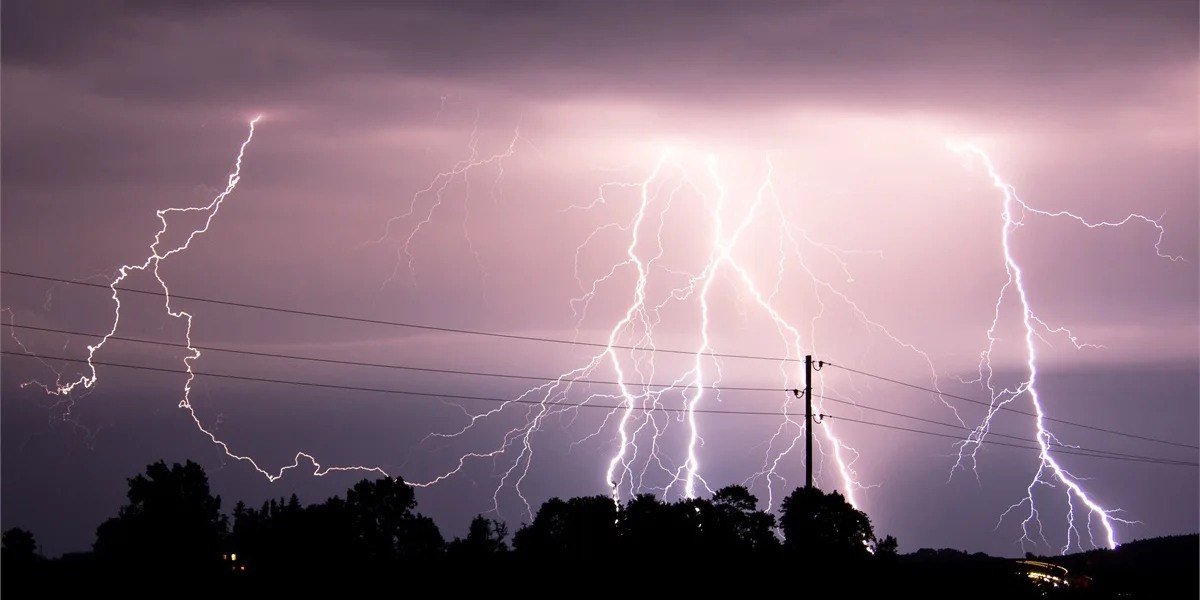
b) relâmpagos induzidos: mais comum. Mesmo quando um raio atinge a centenas de metros de distância, seu poderoso campo eletromagnético induz sobretensões em linhas de alimentação e de sinal internas, que então se propagam no equipamento.
Surtos internos (ocorrências frequentes)
Comutação de operações de equipamentos de alta potência em edifícios – como elevadores, compressores de ar condicionado e máquinas de soldagem – geram transientes frequentes na rede elétrica. Até mesmo operações como fotocopiadoras e máquinas de café produzem sobretensões transitórias frequentes e de baixa energia.
O efeito cumulativo desses surtos atua como um “martelo em miniatura” que atinge continuamente os componentes eletrônicos, causando gradualmente degradação do desempenho, corrupção de dados e redução da vida útil do equipamento. Um único evento de surto de grande, no entanto, é semelhante a um “ataque cardíaco eletrônico”, capaz de causar danos permanentes no equipamento ou até mesmo desencadear incêndios.
Os dispositivos de proteção contra surtos (SPDs) são dispositivos de segurança eletrônica projetados especificamente para combater essas ameaças. Suas funções principais podem ser resumidas como “monitor, desviar e prender”.
Em condições normais de tensão, os SPDs apresentam alta impedância, sem impacto no circuito. Ao detectar sobretensão, ele faz a transição para um estado de baixa impedância em nanossegundos, estabelecendo um caminho de descarga seguro para o solo para correntes de surto, limitando a tensão em seus terminais (tensão de fixação) a um alcance seguro dentro da tolerância do equipamento protegido.
Portanto, os SPDs não são um componente de luxo, mas um componente essencial em qualquer sistema elétrico moderno que busca proteger os ativos, garantir a continuidade dos negócios e proteger os dados.
Como funciona um SPD?
Em condições normais, um SPD não tem efeito sobre o circuito e permanece em um estado de alta impedância. Ao detectar um surto perigoso, ele reage em nanossegundos, mudando para um estado de baixa impedância. Isso cria um caminho de baixa resistência para a corrente de surto, “desviando” rapidamente para o terra, ao mesmo tempo em que limita a tensão em seus terminais (conhecido como tensão de fixação) para um alcance seguro. Isso protege o equipamento conectado em paralelo contra danos.
Você pode visualizá-lo como uma válvula de alívio de pressão inteligente para fluxo de água de alta tensão, conforme mostrado abaixo: Quando a pressão da água é normal, a válvula permanece bem fechada. Quando a pressão aumenta repentinamente (surge), a válvula abre instantaneamente, liberando o excesso de fluxo de água (corrente de surto) para garantir a segurança do equipamento a jusante (seus aparelhos).

Que danos podem causar surtos de energia nas luminárias LED?
Muitas pessoas assumem que, como as luminárias de LED são duradouras e eficientes em termos de energia, elas são inerentemente “duráveis e robustas”. No entanto, a realidade é exatamente o oposto - as luminárias de LED são extremamente sensíveis a surtos de energia, principalmente devido ao seu componente principal: a fonte de alimentação do driver.
1. Danos ao comutação de fontes de alimentação
Conforme mostrado abaixo, os próprios chips de LED operam sob tensão CC baixa (por exemplo, 3V) e corrente constante. A energia CA de 220 V que usamos diariamente deve ser convertida por meio de um componente chamado de "fonte de alimentação do driver". Esse driver é essencialmente uma fonte de alimentação de comutação de precisão, embalada com componentes sensíveis de semicondutores (como MOSFETs, controladores de IC, diodos retificadores, etc.).
Esses componentes semicondutores são extremamente frágeis, com tolerância à tensão muito abaixo das lâmpadas incandescentes ou fluorescentes tradicionais. Até mesmo um pequeno pico de tensão pode causar uma quebra. Portanto, uma fonte de alimentação de comutação protegida por surtos é crucial para prolongar a vida útil das luminárias.
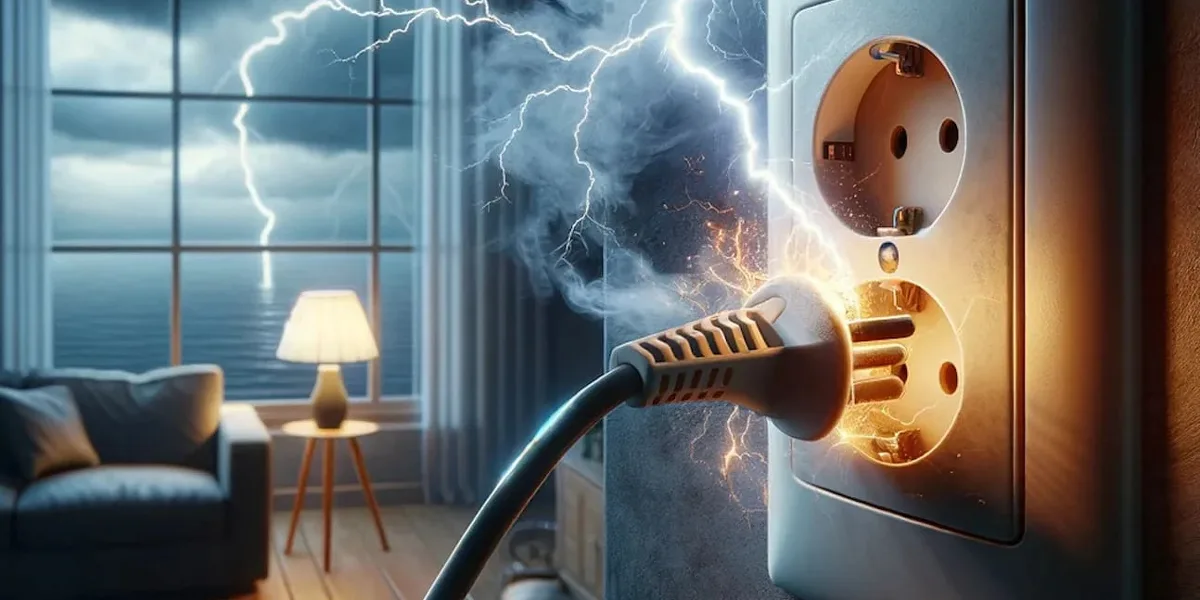
2. Queimando chips LED
Altas correntes podem cortar diretamente as conexões do fio de ouro ou danificar os chips de LED, causando um escurecimento parcial ou completo e falha dos chips.
3. Degradação progressiva dos componentes
Este tipo de dano é mais sutil e difundido. Pequenos surtos repetidos que não destroem imediatamente o acessório causam danos cumulativos aos materiais semicondutores internos. Com o tempo, as luminárias podem inexplicavelmente escurecer, piscar, experimentar a deriva de cores ou emitir ruídos anormais do driver.
A expectativa de vida dos acessórios cai de 50.000 a 100.000 horas para apenas um ou dois anos – ou até menos. Você pode supor que comprou um "produto abaixo do padrão", mas o verdadeiro culpado provavelmente é o surto interno frequente.
Benefícios de adicionar SPDs a luminárias
As luminárias de LED, principalmente em aplicações comerciais, industriais ou externas (como iluminação pública, holofotes e luzes industriais/mineração), carregam custos de instalação e instalação significativamente mais altos do que os acessórios tradicionais. O dano a um único dispositivo envolve não apenas o custo de substituição da unidade, mas também despesas substanciais de mão de obra para manutenção/substituição, especialmente em ambientes complexos ou de alta altitude.
O custo de instalação de um SPD é significativamente menor do que as despesas de longo prazo incorridas pela substituição frequente de drivers de LED ou equipamentos inteiros devido a danos causados por surtos. É uma salvaguarda crucial para os investimentos em iluminação.
Portanto, equipar sistemas de iluminação LED – especialmente ao ar livre, comercial e industrial – com dispositivos de proteção contra surtos (SPDs) não é um luxo opcional, mas uma medida de proteção necessária. Ele permite:
- Evite falhas repentinas e caras do equipamento.
- Evite a degradação do desempenho gradual oculta e reduzida e uma vida útil reduzida.
- Reduza as despesas de manutenção e melhore a confiabilidade do sistema de iluminação.
- Para acessórios domésticos individuais: use réguas de alta qualidade com proteção contra surtos básicas integradas.
- Para edifícios ou vilas inteiras: instale SPDs tipo 2 no painel de distribuição principal para fornecer proteção contra o porta-malas para todos os circuitos domésticos.
- Para luminárias de LED ao ar livre (luzes de rua, luzes da paisagem) e grandes circuitos de iluminação de fábrica/mall, os SPDs tipo 2 devem ser instalados especificamente para circuitos de iluminação nos painéis de distribuição de zona correspondentes. Para acessórios particularmente caros ou críticos, considere adicionar SPDs tipo 3 dentro do dispositivo ou no terminal para proteção granular.
Ao investir em SPDs, você garante que seu investimento em iluminação LED oferece a longevidade prometida e alto desempenho, oferecendo assim uma verdadeira relação custo-benefício.
Como entender a classificação SPD?
Você pode perguntar: se SPDs existirem, por que categorizá-los em diferentes tipos? A resposta é que nenhum SPD pode lidar independentemente com todos os tipos de ameaças de surto.
A energia gerada por relâmpagos difere muito em magnitude daquela produzida pelas operações internas de comutação. Portanto, uma estratégia de proteção eficaz envolve o estabelecimento de um sistema de defesa sinérgico em camadas. Esse conceito é conhecido como “coordenação de energia” ou “descarga em camadas”. Imagine como um sistema de defesa de um castelo:
- O tipo 1 atua como as robustas paredes e portões externos, projetados para resistir aos assaltos frontais mais intensos.
- Tipo 2: Os guardas de patrulha dentro do castelo, dirigindo-se aos retardatários que rompem as paredes externas e perturbações internas.
- Tipo 3: os guardas pessoais na porta do quarto do rei, fornecendo a camada final e mais refinada de proteção.
Somente quando essas três linhas de defesa trabalharem juntas, o castelo (seu sistema elétrico) poderá receber a proteção mais abrangente.
Tipo 1 SPD: a primeira linha de defesa contra surtos externos
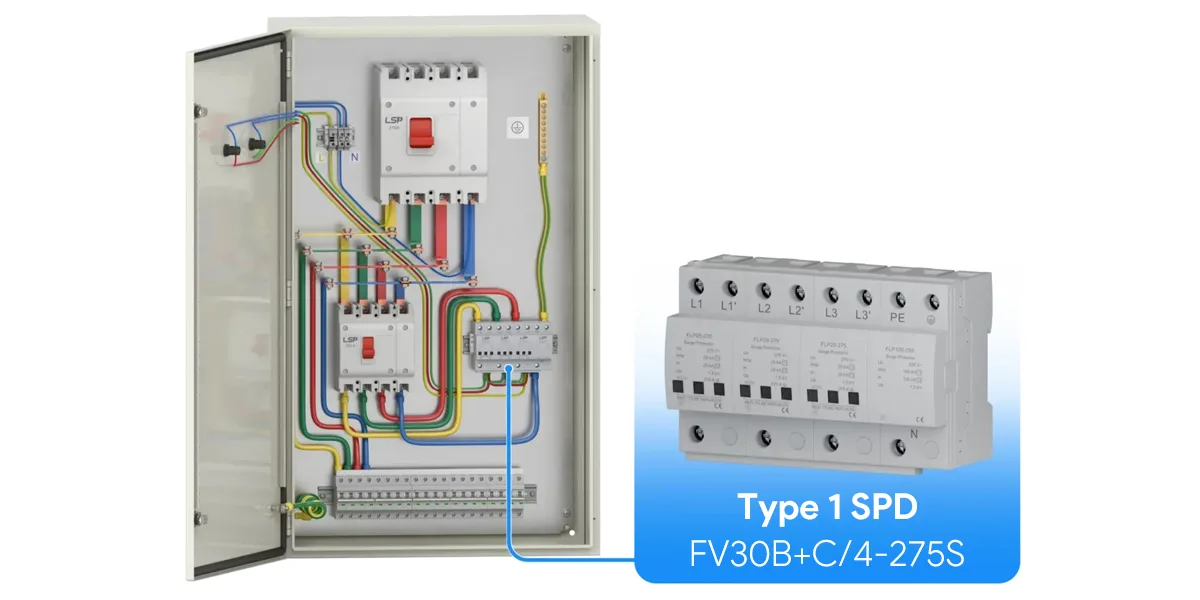
Os SPDs tipo 1 são os dispositivos mais bem avaliados, projetados para desviar partes das correntes para raios causadas por golpes diretos. De acordo com os padrões internacionais (por exemplo, IEC 61643-1), eles devem resistir ao teste com uma forma de onda de corrente de raio simulada de 10/350µs. Esta forma de onda representa a imensa energia de um relâmpago direto, apresentando uma duração extremamente longa que sujeita o equipamento a um estresse severo. Local de instalação: instalado no quadro de distribuição principal do edifício (MDB), normalmente no ponto de entrada de energia.
Caraterísticas: descarrega correntes relâmpago maciças (geralmente dezenas de quiloamperes). Seu objetivo principal não é limitar a tensão a níveis muito baixos, mas “absorver” com segurança o ataque inicial mais letal.
Componentes típicos: Normalmente emprega centelhadores ou tubos de descarga de gás, pois esses componentes podem suportar impactos energéticos extremamente altos.
Cenários aplicáveis: usado principalmente em edifícios equipados com sistemas externos de proteção contra raios (por exemplo, pára-raios) ou fornecidos por linhas de energia aéreas. Ele forma a base de todo o sistema de proteção contra surtos.
Tipo 2 SPD: proteção primária, proteção dos sistemas de distribuição
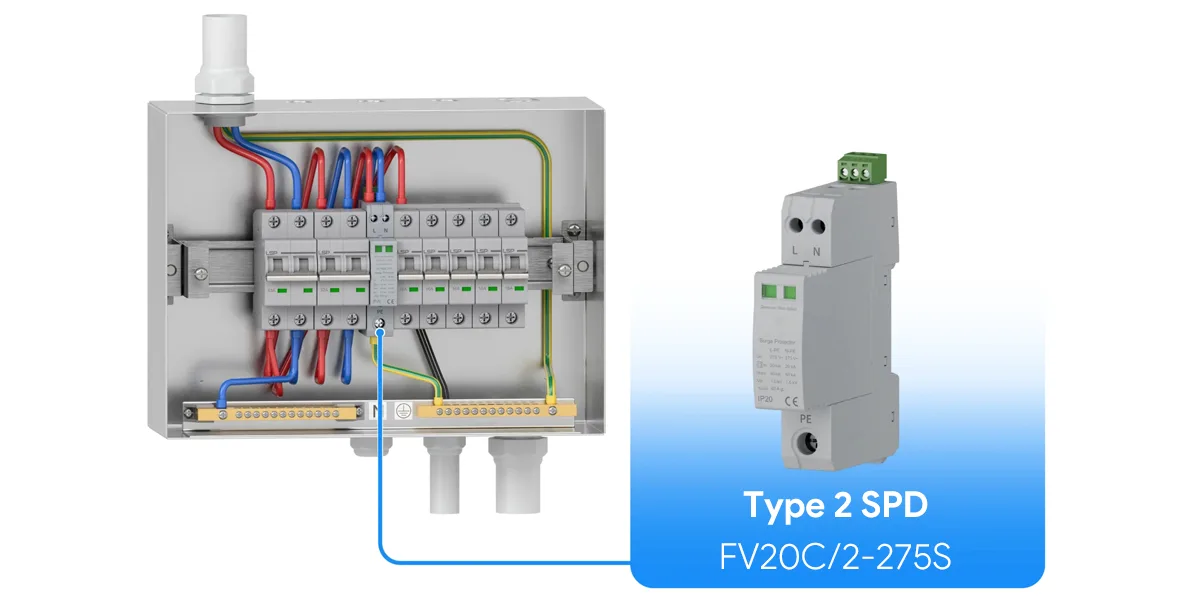
Os SPDs tipo 2 são os SPDs mais utilizados, servindo como nível de proteção primário em sistemas de proteção contra surtos. Eles são testados usando uma forma de onda de corrente de 8/20µs, que simula os surtos residuais transmitidos após serem limitados pelos SPDs tipo 1, bem como surtos gerados pelas operações de comutação interna.
Local de instalação: Instalado em placas de subdistribuição para fornecer proteção para pisos, zonas ou grupos de carga específicos.
Caraterísticas: Limita ainda mais as sobretensões e descargas correntes de surto não totalmente manuseadas por SPDs tipo 1, juntamente com surtos gerados internamente. Ele restringe a tensão a níveis seguros para a maioria dos aparelhos domésticos e comerciais (por exemplo, abaixo do equipamento que suporta as classificações de tensão).
Dispositivo típico: Mais comumente um varistor de óxido metálico (MOV) devido à sua excelente velocidade de resposta e características de tensão de fixação.
Cenário de aplicação: um dispositivo de proteção quase indispensável em todas as instalações elétricas. Em pequenos edifícios sem sistemas externos de proteção contra raios, ele pode até servir como proteção de primeiro nível.
Tipo 3 SPD: proteção de precisão para dispositivos finais
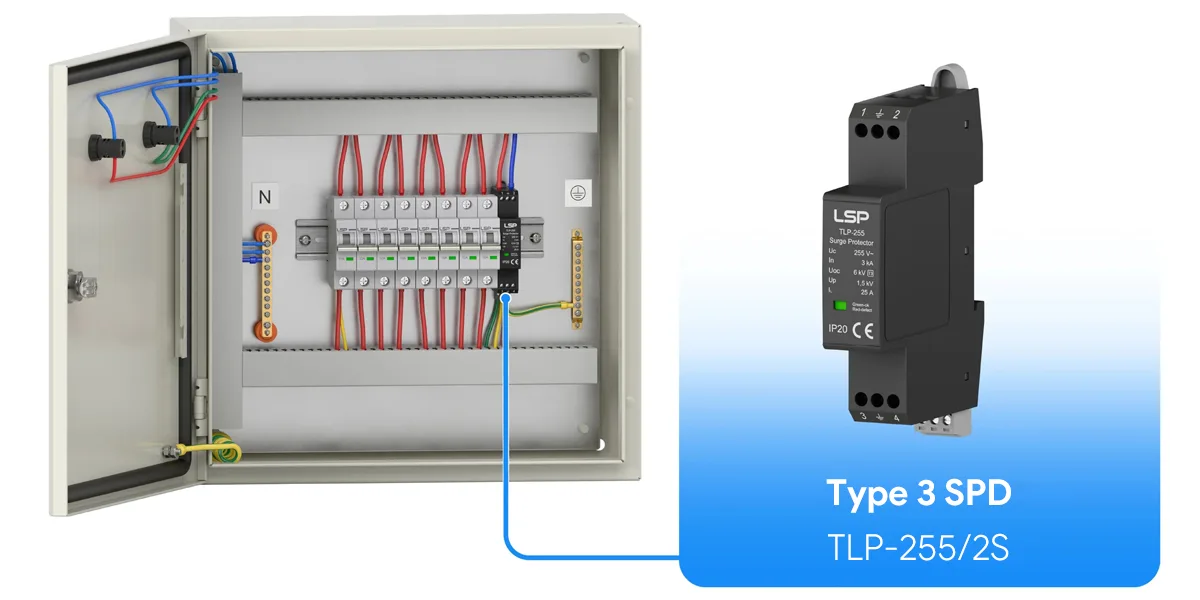
O SPD tipo 3 oferece o nível de proteção mais refinado, projetado especificamente para proteger dispositivos finais altamente sensíveis ou caros. Ele é testado usando ondas compostas (onda de tensão 1,2/50µs e onda de corrente 8/20µs), com valores de corrente de teste significativamente mais baixos do que o tipo 2.
O SPD tipo 3 suprime ainda mais as sobretensões residuais de minutos que ignoram os dois primeiros níveis de proteção. Embora com baixo teor de energia, esses picos de tensão podem degradar a vida útil do equipamento ou causar corrupção de dados por meio de acumulação prolongada. Ele nunca deve ser usado sozinho e deve ser instalado a jusante de um SPD tipo 2.
Locais de instalação:
– na extremidade do equipamento, incluindo tomadas com funcionalidade SPD (por exemplo, algumas réguas de energia avançadas).
– SPDs de plug-in dedicados.
– Módulos SPD incorporados dentro de equipamentos.
Unidades combinadas: SPDs combinados tipo 2+3 também estão disponíveis no mercado. Eles integram os dois níveis de proteção em um único módulo, fornecendo uma solução conveniente e eficiente para cenários em que a instalação de vários SPDs autônomos é impraticável.
Como selecionar e implantar seu sistema SPD?
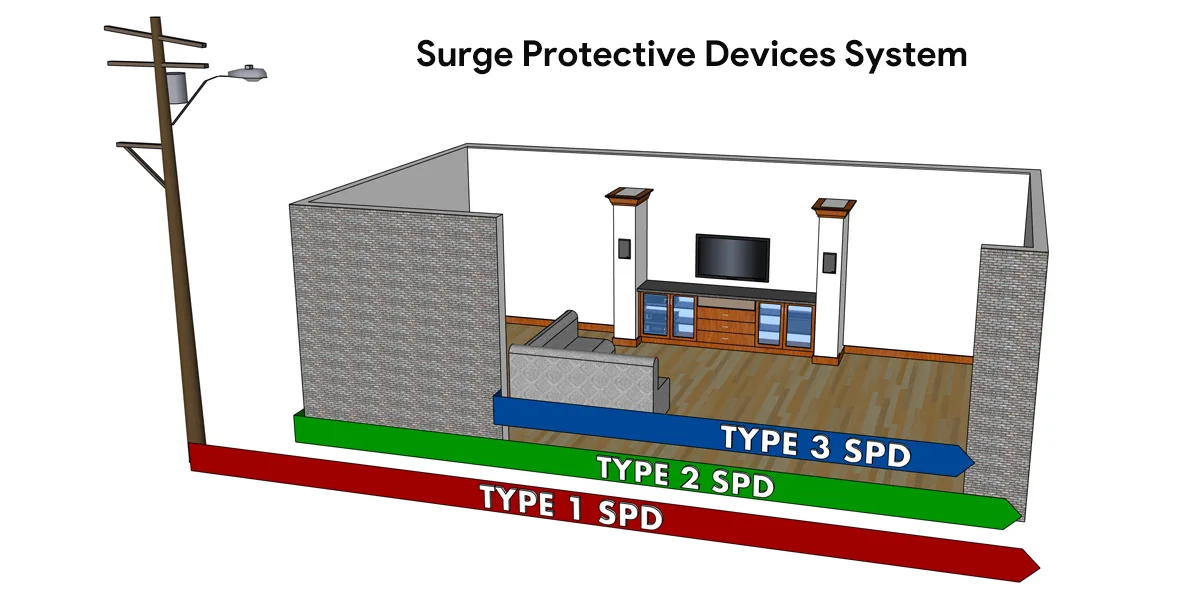
Selecionar o SPD apropriado e construir um sistema coordenado é crucial em ambientes propensos a relâmpagos frequentes ou flutuações significativas de energia. A seleção e instalação adequadas do SPD não apenas evitam reparos caros, mas também garantem a continuidade da produção e da vida diária, tornando-se uma decisão técnica que requer consideração abrangente.
Primeiro, avalie o ambiente do seu prédio: frequência de relâmpagos, status de isolamento, suprimento de energia subterrânea ou subterrânea, presença de pára-raios na estrutura e o valor e a sensibilidade do equipamento interno. Isso determinará se você precisa de proteção tipo 1 ou se uma combinação de tipo 2+3 é suficiente.
- Siga o princípio hierárquico:
– Edifícios com sistemas externos de proteção contra raios ou zonas de alto risco: implementar uma arquitetura completa do tipo 1 → tipo 2 → tipo 3.
– Edifícios comerciais ou residenciais padrão: instale pelo menos um SPD tipo 2 na entrada principal do serviço e complemente com SPDs tipo 3 em pontos críticos do equipamento.
– Pequenos prédios ou unidades de apartamentos: instale um SPD tipo 2 de alto desempenho no painel de serviço e use réguas de energia protegidas por surtos tipo 3 para equipamentos valiosos.
- Nível de proteção de tensão (para cima): Isso representa a tensão de fixação do SPD. Valores mais baixos indicam melhor proteção. Certifique-se de que está abaixo da classificação de tensão de resistência do equipamento protegido.
- Corrente de descarga nominal (IN) e corrente máxima de descarga (IMAX): Isso indica a capacidade do SPD de dissipar as correntes de surto. Valores mais altos significam maior resiliência.
- Para SPDs tipo 1, concentre-se na corrente de impulso (IIMP).
- Garanta a instalação adequada: O desempenho do SPD depende muito da instalação. Minimizar o comprimento do cabo de aterramento é fundamental, pois os cabos excessivamente longos geram tensão induzida que degrada significativamente a proteção. Use ferramentas ou barramentos dedicados para conectar o SPD diretamente e com o mínimo de comprimento ao sistema de aterramento.
- Manutenção e vida útil: SPDs são dispositivos consumíveis. Particularmente os SPDs baseados em MOV se degradam gradualmente após repetidos eventos de surto. Selecione SPDs com contatos de sinal remoto ou janelas de alarme visual para monitorar seu status e facilitar a substituição oportuna.
Selecionar o tipo SPD adequado e construir um sistema de proteção coordenada é fundamental para garantir a segurança do equipamento elétrico e prolongar sua vida útil. Compreender suas distinções e interconexões o ajudará a estabelecer uma “linha de defesa eletrônica” verdadeiramente robusta para sua casa ou empresa. O apêndice fornece parâmetros de referência para selecionar diferentes tipos de SPD:
Valores recomendados para os parâmetros de corrente de corrente de pico e descarga nominal de protetores de surto de linha de força
| relâmpago proteção classificar | Cunidade de um consumidor | caixa elétrica do ramo | A caixa de distribuição na sala de informática e os portos de equipamentos eletrônicos que precisam de proteção | ||
| A fronteira entre LPZ0 e LPZ1 | A fronteira entre LPZ1 e LPZ2 | O limite da área de proteção subsequente | |||
| 10/350μs | 8/20μs | 8/20μs | 8/20μs | 1,2/50μs e 8/20μs | |
| teste de classe I | Teste de classe II | Classe II prova | Classe II prova | Teste de classe III de ondas compostas | |
| imp(ka) | em (ka) | eu, (ka) | eu, (ka) | u(kv)/ix(ka) | |
| A | ≥20 | ≥80 | ≥40 | ≥5 | ≥10/≥5 |
| B | ≥15 | ≥60 | ≥30 | ≥5 | ≥10/≥5 |
| C | ≥12,5 | ≥50 | ≥20 | ≥3 | ≥6/≥3 |
| D | ≥12,5 | ≥50 | ≥10 | ≥3 | ≥6/≥3 |
Conclusão
Em resumo, os SPDs do tipo 1, tipo 2 e tipo 3 cumprem funções distintas, formando um sistema de defesa em camadas de macro a micro. Investir em um sistema de proteção contra surtos bem projetado não é apenas proteger o hardware, mas também um investimento estratégico em segurança de dados, continuidade de negócios e proteção de vidas e propriedades. Ao entender suas respectivas funções e implantá-las de forma sinergética, você pode estabelecer uma barreira robusta para seus ativos eletrônicos contra ameaças elétricas imprevisíveis.
